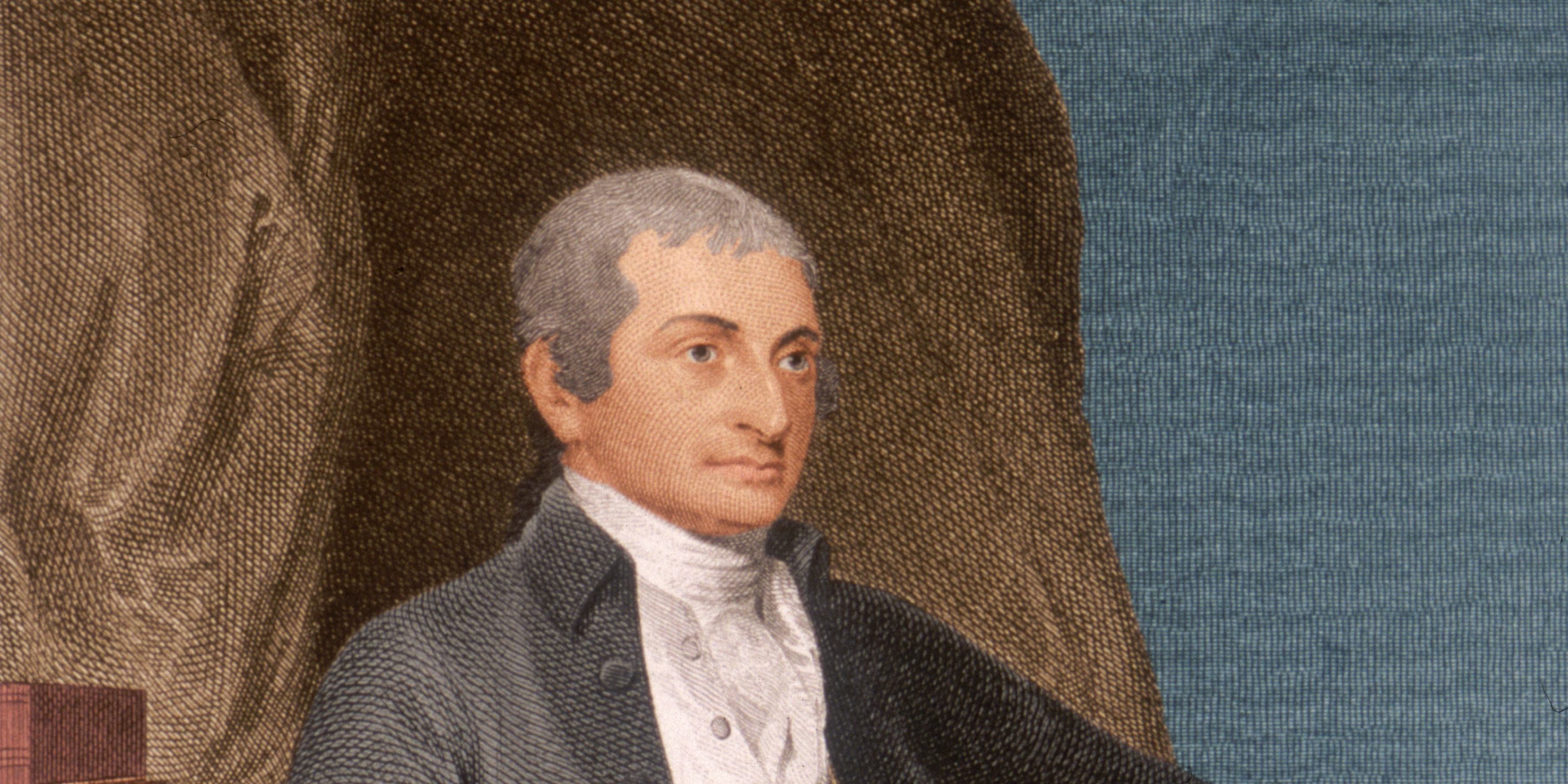John Jay was an American statesman and Founding Father who served the United States in numerous government offices, including the Supreme Court where he served as the first chief justice. The New York native drafted the state’s first constitution in 1777, and was chosen president of the Continental Congress the following year. Jay served as the key negotiator at the Treaty of Paris, which ended the American Revolutionary War and recognized the independence of the United States.
John Jay's Early Years
Born in New York City in 1745, John Jay came from a wealthy merchant family whose ancestors included French Huguenots. He began his career as a lawyer in 1764 after graduating from the newly established King’s College, now Columbia University.
He soon become prominent in New York politics and was elected to the first Continental Congress in 1774 as a representative from New York. During the first Continental Congress, delegates from the American colonies met to discuss resistance to the increasingly oppressive laws enacted by the British Parliament in the lead up to the Revolutionary War.
Jay was not a loyalist to the British Crown, though he initially promoted a peaceful resolution with Great Britain instead of independence. He urged the British government to reconcile with the colonists. He supported the Revolution, however, as war became increasingly likely.
Jay spent much of the Revolutionary War as a diplomat to Spain where he spent three frustrating years, from 1779 to 1782, trying to garner financial support for the American Revolution and an alliance with Spain. (Spain entered the war against Great Britain as an ally of France, though never officially aligned itself with the colonial rebellion.)
Treaty of Paris
In 1782, Jay joined the five-member peace commission tasked with negotiating a peace treaty with Great Britain after the American-French victory at Yorktown ended the fighting in the American colonies.
Two of the members of the commission, Henry Laurens and Thomas Jefferson, did not participate, leaving three men—Jay, Benjamin Franklin and John Adams—to negotiate a treaty with the British.
During the negotiations, Jay pressed strongly for the British recognition of American independence. He also helped the United States secure all land east of the Mississippi River, with the exception of British territories in Canada and Spanish territory in Florida, effectively doubling the size of the new nation.
Signed on September 3, 1783, the Treaty of Paris formally ended the American Revolution.
Federalist Papers
After the American Revolution, Jay believed in a stronger central government than that created by the Articles of the Confederation, the first constitution of the United States.
Jay, along with Alexander Hamilton and James Madison, wrote a series of essays under the pseudonym “Publius” in 1787 and 1788 promoting the ratification of a new U.S. Constitution.
Later collected into a publication known as the Federalist Papers, they argued for a system that would create an effective federal government to act in the national interest while also preserving some power for the States.
The essays were very influential and helped to shape the U.S. Constitution as we know it today.
First Supreme Court Justice
George Washington appointed John Jay the first Chief Justice of the United States Supreme Court in 1789.
Unlike today’s Supreme Court, which consists of nine justices, the Jay Court had only six Supreme Court justices—a chief justice and five associates. All judges were appointed by the nation’s first President, George Washington.
Jay, who served until 1795, decided just four cases during his tenure on the nation’s highest-ranking judicial court, though he was influential in establishing rules and procedures for the American court system.
Jay’s Treaty
After the Treaty of Paris ended the American Revolution, tensions remained high between Great Britain and the United States over a number of unresolved issues.
Britain blocked American exports with trade restrictions and tariffs while continuing to occupy North American forts they had agreed to vacate at the end of the war. In 1794, the Royal Navy seized hundreds of American merchantmen carrying contraband from the French West Indies.
Seeking to achieve peace and better commercial ties with its former foe, Washington sent John Jay to England to negotiate a controversial treaty with the British. While the treaty that Jay negotiated solved some of the differences with Great Britain, it was immensely unpopular at home. Critics found the treaty—which President Washington supported—too favorable to the British.
Jay’s Treaty helped delay another costly war between the United States and Great Britain until the War of 1812, though John Jay paid the price in popularity. His effigy was burned in several U.S. cities: Jay himself reportedly joked that he could travel at night from Boston to Philadelphia by the light of his burning effigies.
Governor Jay
Jay was elected governor of New York in 1795, at which point he resigned from the Supreme Court. He served as governor until 1801. (Jay also ran unsuccessfully for president in 1796 and 1800.)
As governor, Jay signed a bill in 1799 outlawing slavery in New York, though he was a slaveholder until 1798.
Jay retired to his farm in Westchester County, New York, in 1801. He stayed out of politics for the most part, though in 1819 he condemned efforts to admit Missouri to the Union as a slave state, believing that slavery should “not to be introduced nor permitted in any of the new states.”
Jay died in May 1829 in Bedford, New York. He is buried at his family’s private cemetery in nearby Rye on the Jay Estate, part of the Boston Post Road Historic District, a National Historic Landmark.
Sources
A brief biography of John Jay; Columbia University.
John Jay’s Treaty, 1794-1795; U.S. Office of the Historian.
The life of John Jay; Friends of John Jay Homestead.
